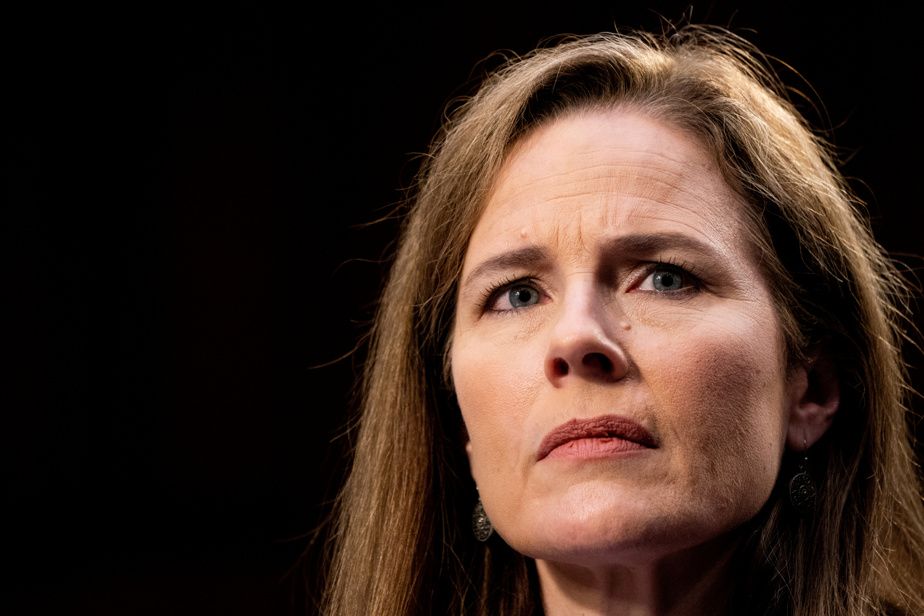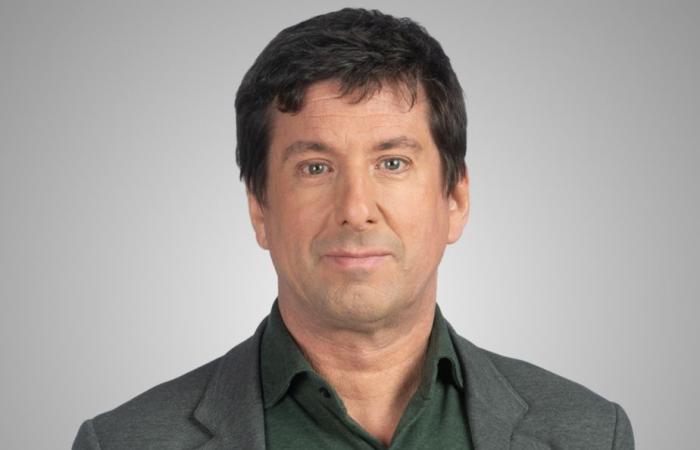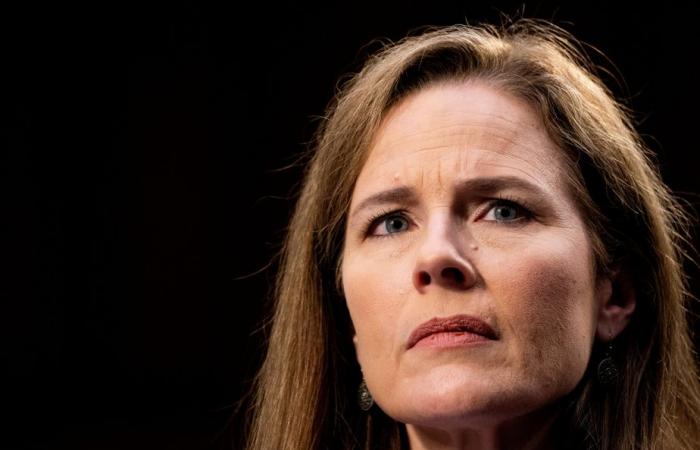Threats to judges, loss of public confidence, politicization of the courts… American judges are living through difficult times. And dangerous ones.
Published at 1:32 a.m.
Updated at 6:00 a.m.
Two weeks ago, a recently retired federal appeals court judge published a book in which he said that everything he believed in for 40 years had gone out the window. David Tatel, a Clinton appointee, prided himself on being friends with his colleagues appointed by Republican presidents, and extolled the value of “collegiality,” which is not about having barbecues together, but about talking civilly among independent colleagues and occasionally changing their minds. The recent shift by the current U.S. Supreme Court has further discouraged him.
“It was one thing to have to follow precedents that I believe are wrong, if they are the result of a process that I respect. It’s another to be bound by decisions of an institution I barely recognize. »
As if to prove him right two weeks late, the Supreme Court has just disavowed 40 years of jurisprudence by undermining the power of federal government agencies, invalidating the “Chevron doctrine.”
It is not uncommon to see US Supreme Court justices with opposing views trading blows, sometimes bordering on insult.
But in recent times, it is not only the strength of the dissent that has come to light. It is a kind of discouragement of the so-called “liberal” judges faced with the rewriting of precedents that were believed to be as solid as the marble of the building in which they sit.
On Friday, it was the turn of Justice Elena Kagan, former dean of Harvard Law School appointed to the Supreme Court by Barack Obama in 2010.
Along with the two other “progressive” justices, she dissented from the majority’s decision to undermine the power of federal government agencies by burying the “Chevron Doctrine.”
Basically, this doctrine required judges to show deference to interpretations of the law made by specialized agencies – the pollution control agency, the food and drug agency, the fisheries agency, etc.
Industry has long complained about the harshness of regulation and the “excessive” power of government agencies. In 1984, the Supreme Court ruled that unless the decision is truly unreasonable or out of line, judges should not substitute their judgment for that of the agencies’ experts. Nor should they choose one policy over another.
The irony is that the 1984 decision dismayed environmentalists. They had attacked a decision of the anti-pollution agency, considering it too permissive towards the oil company Chevron. The Court had set out the rule of judicial restraint and modesty in areas with which it is unfamiliar.
Forty years later, in a case involving herring fishermen, the Court decided that this principle no longer held. Because the Constitution assigns to judges, not to civil servants, “the territory of statutory interpretation,” said Chief Justice John Roberts.
PHOTO J. SCOTT APPLEWHITE, ARCHIVES ASSOCIATED PRESS
John Roberts, Chief Justice of the United States Supreme Court
Justice Kagan denounces not only this view, but the maneuver aimed at increasing the power of judges, and melting that of regulatory agencies, an old business hobby. The Supreme Court is allowed to erase its precedents, but it must do so only for extremely serious reasons. Otherwise, citizens would not know how to behave. Stability and legal certainty are necessary for a rule of law.
This majority decision “rests on wind,” writes Justice Kagan. It is all the less justified, she writes, as elected officials can always clarify the meaning of a law if they judge it to be misinterpreted by an agency. This is judicial arrogance “squared”, she writes, being “once again” dissenting.
This spring, it was his colleague Sonia Sotomayor who admitted to crying alone in her office on the days of the Court’s decision.
Former Justice Stephen Breyer has been on a national tour for his new book, in which he attacks the majority’s “textual” or “originalist” approach to the Constitution, which continually returns to the foundations of the 18th century.e century. But having read his book and heard his talks, his attacks were of an extreme moderation. One senses that he is holding back in his criticism, which is fundamentally radical, so as not to harm the reputation of the Court.

PHOTO ARCHIVES REUTERS
Conservative Justice Amy Coney Barrett
Which does not mean that judges always align themselves according to their camp: last week, conservative judge Amy Coney Barrett sided with two “liberal” judges, while progressive Ketanji Brown Jackson sided with the conservatives in one of the files of the January 6 insurrection. The majority considered that a criminal law of Congress passed in the wake of the Enron financial scandal could not be used to accuse the insurgents – who remain accused under ordinary criminal law. The Court can regularly be unanimous.
Except that the scrapping of the right to abortion, the extension of the right to firearms and the limitations on the regulatory powers of the State mark a profound conservative shift of the highest court in the country.
The Supreme Court has always been “political,” it’s true. Perhaps tensions were even greater in the 1930s, when she systematically invalidated President Roosevelt’s social laws. FDR had threatened to increase the number of judges, which is not provided for in the Constitution, and to appoint a new justice every time a judge passed the age of 70. But miraculously, a judge softened his positions, and the controversial project was abandoned.
The Court also does not have to align itself with the positions of the government of the day. The problem is that the majority of Americans now doubt the very integrity of the judicial process.
In a survey of its members, the American National Judicial College observed that 9 out of 10 judges believe that public esteem is declining – a marked increase in perception compared to other years.
Among the two main factors of this perception: the politicization of the Supreme Court in particular and of the judiciary in general. And the attacks of the “national leaders” towards justice – understand here: Donald Trump.
Judge Royce Lamberth, appointed by President Ronald Reagan 37 years ago, denounced in a sentencing the fact that Republican elected officials have presented the criminal acts of January 6 as legitimate. He said he was shocked to see elected officials trying to rewrite history and present the January 6 insurrection as some kind of harmless excess.
It goes without saying that this minimization of serious criminal acts has undermined public confidence in prosecutors, judges and the entire administration of justice. Especially when Donald Trump speaks of “political prisoners”, even though all of them had the right to a proper trial – if we exclude the excessive use of the Enron law.
The level of threats has reached new heights, encouraged by the atmosphere of trivialization of these events.
And of course, the fact that Republican elected officials showed up at Donald Trump’s criminal trial allowed many to repeat that the case was political and that the judge himself was not impartial.
Another judge appointed by Reagan and then reappointed by George W. Bush, Reggie Walton, denounced the tone of Trump’s attacks on Judge Juan Merchan, and the risks of violence that could result.
This exceptional public outing is only an echo of the widespread concern of American judges in the face of attacks on judicial independence and concerted political maneuvers against the credibility of the system.
Both conservative and progressive judges may have rejected allegations of electoral fraud in 2020, but the lie is still repeated, repeated, as if it had no value.
Judicial morale is truly at an all-time low in the American judiciary.
Subscribe to our newsletter on the American elections








